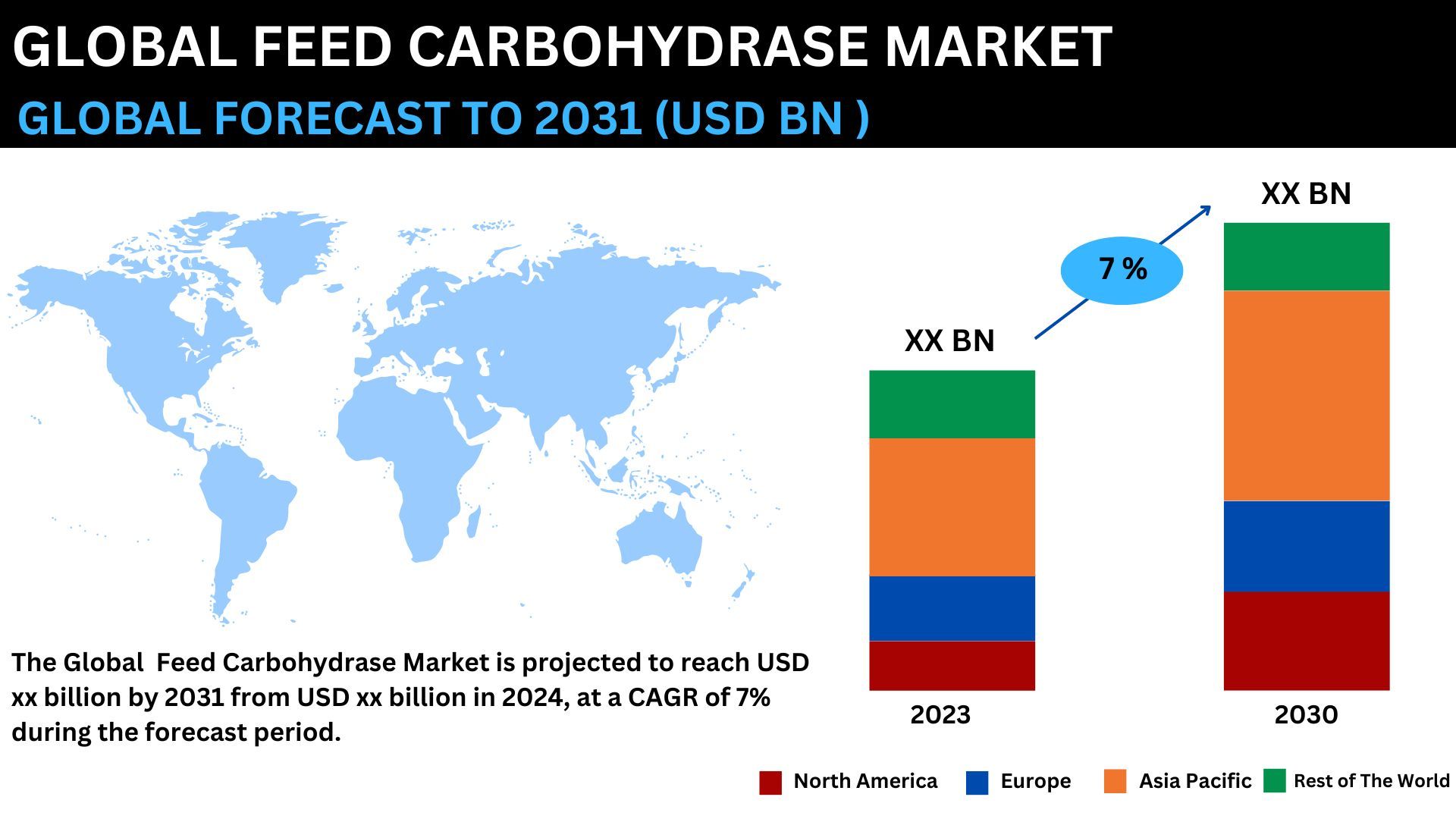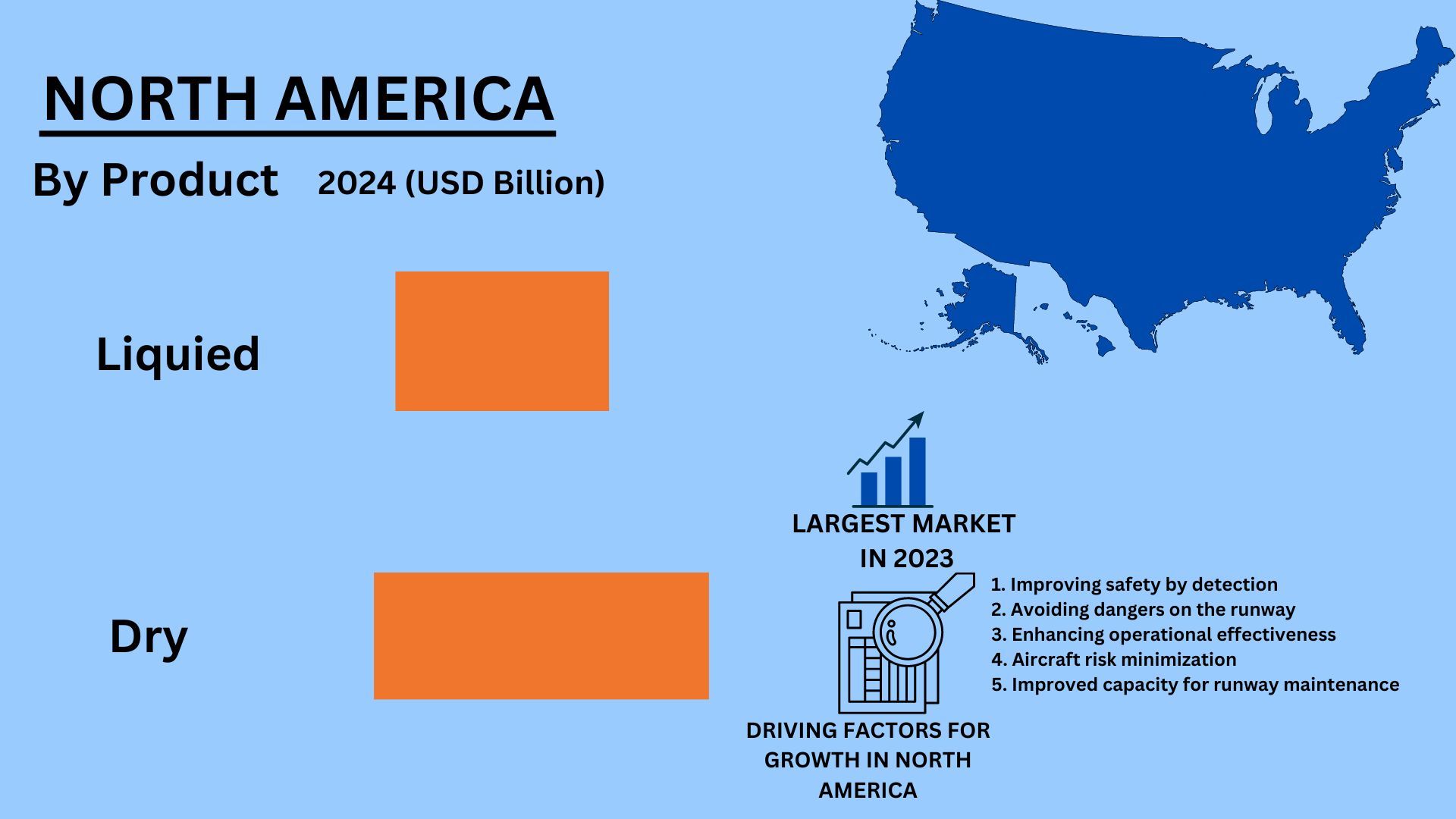GLOBAL FEED CARBOHYDRASE MARKET
EMI10204 ID | Agriculture | February-2024 | 294 PagesIn terms of revenue, the global feed carbohydrase market was valued at USD XX billion in 2023 and is anticipated to rise at a compound annual growth rate (CAGR) of** 7%** between 2024 and 2031.

The feed carbohydrase market includes companies that manufacture and provide the enzymes needed to make animal feed. Carbohydrases are a kind of enzyme that breaks down complex carbohydrates into simpler sugars, improving nutrition absorption in animals such as ruminants, poultry, and pigs. Increasing animal growth, lowering feed costs, and enhancing feed efficiency all depend on this market. The market is developing as a result of things like advances in enzyme technology, rising consumer demand for products containing animal protein, and improving knowledge of animal nutrition. The regulatory approval of the use of carbohydrase enzymes in animal feed formulations is also driving market growth. All things considered, maximizing animal nutrition and advancing sustainable livestock production practices depend on the feed carbohydrase industry.
Feed Carbohydrase Industry Trends
Drivers: Rising demand for items containing animal protein.
A number of variables, such as population increase, rising affluence, and shifting dietary preferences, are contributing to the fast growing demand for animal protein products. There is a growing demand for animal-based proteins including meat, dairy, and eggs as people look for better diets. The issues of sustainable production, environmental protection, and animal welfare are brought on by this increase in demand. In the global food system, balancing these needs with ethical, health, and environmental considerations continues to be crucial.
Restraints: Feed carbohydrase products are expensive.
Feed carbohydrase products incur high costs due to several factors. Firstly, their production involves specialized enzyme technology, which requires sophisticated manufacturing processes. Additionally, research and development expenses contribute to the overall cost, as these products undergo extensive testing to ensure efficacy and safety. Moreover, quality control measures are crucial to maintain product integrity, adding to production expenses. Furthermore, marketing and distribution costs further escalate the final price. These cumulative factors result in the relatively high cost of feed carbohydrase products in the market.
Opportunities: Growth of the animal feed sector in developing nations
Rising demand for livestock products is driving major development in the animal feed business in emerging nations. The demand for meat, dairy products, and eggs is rising due to factors including urbanization, population expansion, and rising disposable incomes. This is raising the need for premium animal feed. Furthermore, developments in manufacturing methods and feed technology are supporting the industry's expansion. Feed producers, suppliers, and other agricultural stakeholders have a chance to profit from this development by taking advantage of the growing market in emerging nations.
Challenges: The effectiveness of feed carbohydrase is impacted by variations in the quality of raw materials.
The effectiveness of feed carbohydrase enzymes can be considerably impacted by variations in raw material quality. Variations in the nature of the raw material, such as differences in the amount of fiber, starch, or anti-nutritional elements, can affect how well the enzyme breaks down carbs. In terms of food consumption and animal development, this may result in inferior performance and variable enzyme activity. Thus, ensuring a constant quality of raw materials is essential to optimizing feed carbohydrase enzymes' effectiveness in animal nutrition.

Global Market Ecosystem for Feed Carbohydrase
Prominent companies in this market include well-established manufacturers and service providers of Feed Carbohydrase market. These companies have been operating in the market for several years and possess a diversified product portfolio, organic & inorganic strategies, strong global sales and marketing networks. Prominent companies include DuPont (U.S.), AMORVET (India), DSM (Netherlands), Novozymes (Denmark), BIO-CAT, Inc. (Germany), BEC Feed Solutions Pty Ltd (Australia), Amano Enzyme Inc. (Japan), NOVUS INTERNATIONAL (U.S.), AB Enzymes (Germany), Associated British Foods plc (U.K.) and Others.
Report Scope: Feed Carbohydrase Market
Here's the table with the requested details:
| Report Metric | Details |
|---|---|
| Market Size (Years) | 2020–2031 |
| Base Year Considered | 2023 |
| Forecast Period | 2024–2031 |
| Forecast Units | Million/Billion (USD) |
| Segments Covered | By Type, Source, Product Type, Livestock, Application, and Region |
| Geographies Covered | North America, Europe, Asia Pacific, Rest of the World |
| Companies Covered | DuPont (U.S.), AMORVET (India), DSM (Netherlands), Novozymes (Denmark), BIO-CAT, Inc. (Germany), BEC Feed Solutions Pty Ltd (Australia), Amano Enzyme Inc. (Japan), NOVUS INTERNATIONAL (U.S.), AB Enzymes (Germany), Associated British Foods plc (U.K.), and Others. |
